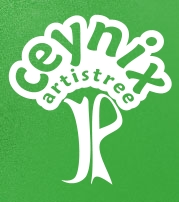

|
|
|
|||||||||||||||||||||
|
|
||||||||||||||||||||||
|
About Bonsai Trees There is a lot of difference between Japanese and Chinese Bonsai. Bonsai are generally thought to be a Japanese invention, but in fact started in China thousands of years ago. Japanese Bonsai are very formal. Chinese Bonsai are much more informal and have a greater landscaping aspect to them. In fact miniature landscapes often comprise an entire chinese bonsai with dead branches or rocks. Chinese Penjing is generally split into three types: Tree Penjing; Landscape Penjing; and Water and Land Penjing, although they also use the Japanese names - formal, informal, cascading, etc - as points of reference. Historically, style in Penjing was more to do with regional style, with different areas of China specialising in certain species of tree, certain techniques (clip and grow, bending with rope, bending with wire, etc.) or certain visual ideas (such as trees shaped to represent or suggest dragons). In Japanese Bonsai, crossed or tangles roots are generally seen as a real faux pas, but in Penjing heavily knotted roots are something which suggests character and age in a tree. Also, in Penjing there is less emphasis on technical perfection (often pruning scars are not hidden). In Penjing, little pagodas and men with fishing rods adorning the scene are seen as a good thing (adding to the beauty), whereas in Japanese Bonsai they are just thought of as tacky (distracting you from the tree). Ditto pot decoration. Japanese Bonsai is more about the image of an idealised tree, and Penjing is about telling a story. Japanese Bonsai are classified is several ways, size and style being the main contenders. Shito are bonsai between 1&5cm heightMame are less than 7cm Shohin are up to 20cm Kifu are 20-40cm Chu are 40-60cm Dai are bonsai taller than 60cm The more common styles are: Chokkan - formal upright In the last few years there has been a movement in Japanese bonsai called Mambonsai which puts small figures with bonsai but it is not very widespread.
|
|
|
|
|
| Site Map |